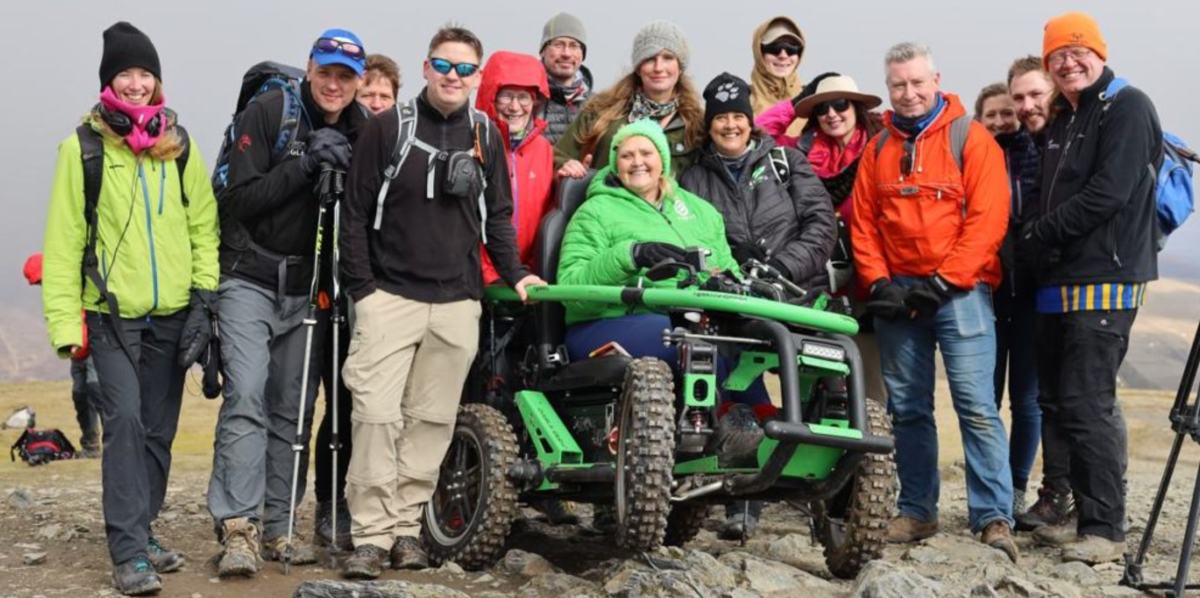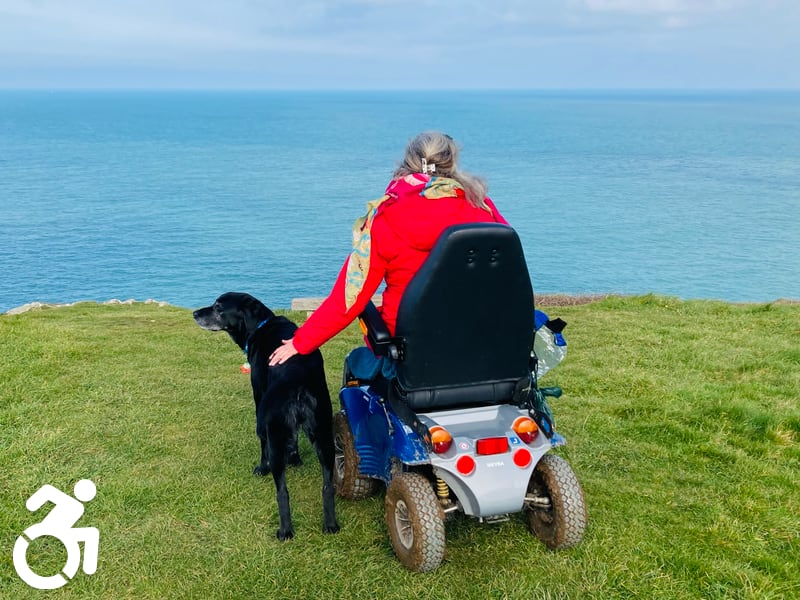Horses for courses
Seventy years after the Act of Parliament that created the first National Parks, a major review, led by writer Julian Glover, has called for bold action to ‘reignite the founding spirit’ of our great National Park movement in order to make them greener, more beautiful and open to everyone.
In the report, published September 2019, Mr Glover writes about “the need for improved accessibility for visitors with disabilities to our Parks and AONBs.”
This is music to my ears.
Something I have been shouting about since 2011.
When illness first struck and I became a wheelchair user I was sickened, almost broken, that I couldn’t get into the hills. For me, and for Andy, walking was an escape from the stresses and strains of everyday life. When the weekend arrived, we would travel up to the Yorkshire Dales or the Lake District and set out on a hike. We loved to cover distance and we loved to climb high. We loved the solitude of the mountains.
It was in 2011, when I had to swap my boots for wheels, that I became acutely aware how difficult it was to access the countryside as a disabled visitor.
I started my campaign.
To create a countryside for all.
If I wanted to get into the hills then I guessed that there would be other people who felt the same.
I was right.
“The Policy Lab work and meetings with groups representing disabled visitors showed us the huge appetite those faced with physical disabilities have for getting out into nature,” wrote Mr Glover.
Back in 2011, when I set off on my grand mission to create a countryside for all, I discovered that many of the National Parks promoted ‘Miles without Stiles’ routes. As a hardened hillwalker, I scoffed at these mainly shorter, low level walks. I referred to them as ‘duck pond walks’ – had this really what life had come to? It seemed hardly worth getting the wheelchair out of the car for a half-mile ‘walk’.
I then learned about the different all terrain wheelchairs that were on the market.
And when I had a test drive of a TerrainHopper – Wow! Brain explosion! A wheelchair that could climb up rugged terrain and have battery power that lasted for a good 15+ mile hike. I began looking at maps and identifying potential bridleways that I could follow.
And when I eventually got my own TerrainHopper, I once more was out hiking in the Lake District National Park. To date, I’ve climbed several of the Wainwrights, including Helvellyn and Blencathra. I’ve travelled coast to coast, from St Bees to Robin Hoods Bay, taking in the Old Coach Road. I’ve climbed Walna Scar and Hencombe. Just to name a few.
And along the way I’ve been faced many challenges and obstacles, such as locked gates on bridleways, concrete bollards on public highways, kissing gates and bridges that are too narrow to pass through.
Each time I have come across an obstacle, I have spoken to Lake District Rangers who have taken note of the barrier and who have, where funding and time have allowed, made the necessary changes. In fact, whilst travelling through the Lakes, near Loweswater, on my C2C journey, we came across the Ranger I had been speaking to about the route that I was planning to take. He was just widening a gap in the fence in readiness of my passing through! “I’ve been expecting you,” he declared, “We’re all ready for you!” Now that’s what I call good service.
And whilst it is still my personal desire, when out in the hills, to get higher and to go further, I have come to respect that not everyone has the same wants and wishes. The more I am working with different people I have come to understand that some visitors to the National Parks are looking for a short walk with a view.
I met a lady a few weeks ago who said that her son had seen a waterfall for the first time because she had watched the film we had made at Cotter Force, in the Yorkshire Dales and knew that his wheelchair would cope with the terrain to the falls and that she was able to push him the third of a mile along the track. She cried with joy at being able to do the walk with her family.
In the Landscape Review, Mr Glover is calling for a “network of accessible, hard surface, stile-free paths that are disabled and wheelchair-friendly, deploy gates with RADAR keys, and provide all-terrain wheelchairs.”
Let’s just hold that thought for a moment.
A few people have taken this comment about ‘hard surfaces’ as ‘all paths around the Lake District will be tarmacked.’ I read one comment on Twitter that suggested there would be a road to the top of Scafell for ‘them disabled folk’. Another person asked, “When is the Stana Stairlift being installed on Helvellyn?”
Absolute crap and ignorance.
I know that there are strong feelings about the resurfacing of the old railway track from Threkeld to Keswick. Not a good example of developing a barrier-free route, I must admit but let’s hope that it has been recognised as a poor decision made by the powers that be. A decision that hasn’t done a campaign – to create a countryside for all – any good for anyone. It’s just given ignorant folk more ammunition to complain about disabled access.
Most disabled people accept that not all areas of the countryside can be made fully accessible. I have spoken with a lot of people with disabilities and not one person wants a National Park that has sanitised it paths and bridleways. On the other hand, they have a reasonable expectation that ‘man-made’ features in the countryside (such as gates, paths and seats) have considered their needs.
I would say that the main concern has been the lack of information regarding each walk. People want enough detail about a walk so they can make an informed decision about the suitability of their wheelchair for the terrain and for the distance to be covered.
And as technology develops, so will the availability of all-terrain wheelchairs. This is what we are needing in the National Parks.
‘At the heart of walking’, The Ramblers has an excellent guide to using public rights of way. For all our wheel-friendly routes, please visit Access The Outdoor Guide.












